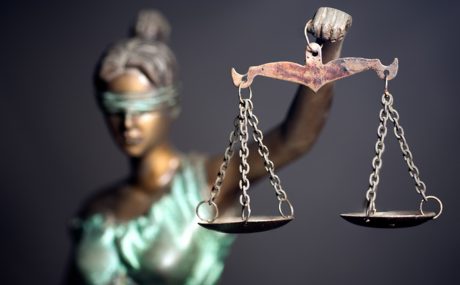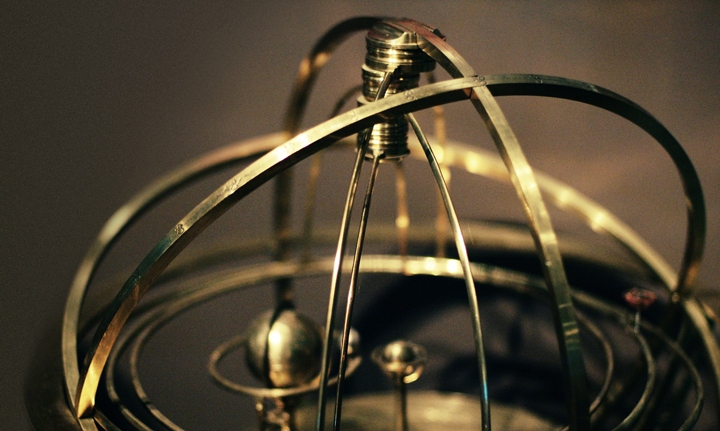Laura Jenkins and Mike McCabe write for the Commercial Litigation Journal, questioning why judicial assistants and assessors are not more commonly used within litigation.
In a lecture given in 2017 in his role as Lord Chief Justice, Lord Thomas noted:
“Bitcoins. Blockchains. Big Data. Financial markets’ complexity and the complexity of the law underpinning them continues to grow apace. The law needs to keep pace with such developments.” (The Jill Poole Memorial Lecture: ‘Keeping Commercial Law Up To Date’, 8 March 2017, www.legalease.co.uk/ keeping-commercial-law.)
Lord Thomas believes the UK can keep pace and remain a world-leading jurisdiction for financial and commercial disputes through the continued promotion of judicial expertise, the increased use of assessors and a focus on procedural innovation. In this article, we focus on the second of those suggestions and explore the role of the assessor, the reasons assessors are not as widely used as Lord Thomas would like, and whether there are other means, including the use of judicial assistants, which may better achieve similar outcomes.
Assessors
Section 70(1) Senior Courts Act 1981 and CPR 35.15 give the court the power to appoint an assessor on its own initiative and set out the remit of the role. As a ‘quasi-judicial official’ (see R (on the application of British American Tobacco (UK) Ltd) v Secretary of State for Health [2016]), they provide the court with impartial technical or expert information and the judge can request that the assessor attend all or part of the trial. They cannot, however, be cross-examined.
The judge can request information from the assessor in many forms including a report, written responses to the judge’s queries or a one-to-one lesson in the particular topic. For example:
- In Bow Spring v Manzanillo II [2004], which originated in the Admiralty courts, the Court of Appeal gave guidelines as to best practice for judges exchanging questions and answers with an assessor. It was held that a judge should draft the questions in consultation with counsel and should disclose the assessor’s answers to counsel in order that submissions may be made as to whether the judge should accept their advice.
- In Electromagnetic Geoservices ASA v Petroleum Geo-Services [2016], in preparation for trial, Birss J received an introductory lecture from a scientist about the relevant technology which was to be the subject of the patent application. The assessor was not informed of the issues in dispute and the teaching materials were subsequently provided to all parties. Birss J stated that the knowledge with which he had been primed:
… allowed the speeches and cross-examination to proceed more briskly than would have been possible without it. So time and therefore cost has been saved.
It is clear from the above that the way in which an assessor is used is within the court’s discretion. As parties are wary about the court’s reliance on and assessment of the assessor’s input, judges try to exercise that discretion to ensure parties have visibility over the process.
Support for assessors
Lord Thomas’s appeal for the wider use of assessors in the commercial court is by no means a new judicial initiative. In two judgments in the 1950s, Devlin J advocated the practice of appointing an assessor for technical maritime questions, which was ‘always followed’ (Esso Petroleum Co Ltd v Southport Corporation [1956]) in the Admiralty Division. His warning as to the ‘undesirability of having questions of this sort tried by a judge of the Queen’s Bench Division sitting without assistance’ was also cited by Lord Bingham in a 1985 essay championing the benefits of assessors (see The Business of Judging: Selected Essays and Speeches (2000), Oxford University Press, pp19-24). Nearly three decades later in 2014, Lord Neuberger recalled at the annual Bond Solon Expert Witness Conference the value he derived, as a ‘judicial newcomer’ to the world of patents in 1998, from having access to a source of technical information that was independent of the parties (‘Expert Witnesses’, 7 November 2014, www.legalease. co.uk/bond-solon).
The pleas of Lords Thomas, Bingham and Neuberger demonstrate that the words of Devlin J have not been heeded and the use of assessors remains uncommon outside of the Admiralty and patent courts.
Reasons assessors remain rare
Identifying appropriate cases
The notes to CPR 35.15 state that an ‘assessor is likely to be of particular assistance in a case raising complex technical issues’ but also notes that their use is unlikely to be cost-effective in all but the ‘heaviest of cases’. In British American Tobacco, which resulted in a nearly 400-page-long judgment, Green J commented that he had not received a teach-in similar to Birss J’s in Electromagnetic Geoservices. He observed that:
… no process such as I have described above was conducted and I was left to read and absorb with scant assistance a vast amount of material on a wide range of expert issues.
Green J clearly felt he needed assistance with not only the complexity of the evidence but the quantity of it.
By contrast, in Balcombe Group plc v London Development Agency [2008], judicial consent was not given for the use of an assessor in a claim worth £600,000 as it would not have been consistent with the overriding objective.
Control over the evidence
Parties to finely-balanced, heavyweight litigation are often conscious that they cannot control the information an assessor may present to the judge and how that will affect their respective cases. Lord Thomas was dismissive of this concern as he believes that ‘95% or more of what is before the court’ is common ground between experts so assessors can assist in relation to the vast majority of subjects covered in a neutral way. Commercial parties may be less persuaded by that assurance, given experience with the difficulties that experts often face in agreeing joint statements.
Expert evidence ought to explain technical points adequately
Green J stated that assessors are needed when:
…the Court was not satisfied that the parties’ initial efforts to reduce the technical issues to manageable proportions were sufficient.
Parties and their experts would often prefer to be afforded a further opportunity to clarify or narrow the issues if their initial efforts are deemed to have been insufficient rather than welcome the introduction of a third expert by way of an assessor.
Difficulty with finding an appropriate candidate
In his essay, Lord Bingham acknowledged that finding an assessor who was sufficiently qualified in the field and without an affiliation with any party is often difficult. Most substantial oil and gas disputes, for example, will involve one of the major oil companies and those experts with ‘the best up-to-date practical knowledge’ (see Tom Bingham, ante) are likely to have worked with or for one of those companies in industry.
Further, experts in lucrative and time-intensive industries, such as financial services, are the least likely to have the availability or financial incentive to devote their time to assisting a judge, in particular where the trial is complex and lengthy.
Specialist judges
In an example of the ‘procedural innovation’ to which Lord Thomas also referred, the inception of the financial list brought with it a programme of ‘intense tuition’ in the cutting-edge aspects of financial markets for those specialist judges selected to adjudicate its cases. In theory, this should decrease the likelihood that those judges will feel unfamiliar with the subjects covered in expert evidence and would, therefore, reduce the necessity for assessors.
A more cost-effective alternative
In the patents court, where the use of assessors is widespread, the cost of the assessor is borne by the court out of public funds in accordance with s70(3) and (4) Senior Courts Act 1981. Otherwise, the cost of an assessor is borne by the parties in accordance with CPR 35.15(5). This additional cost can be prohibitive and can prevent the court from being in a position to do more than suggest an assessor where the parties indicate that the additional cost is unnecessary or disproportionate.
An alternative, which avoids the costs of instructing a ‘third expert’ and allows parties to feel they have not ceded control over the evidence presented to the judge, is a neutral teach-in provided by the instructed experts themselves. In a follow-on damages claim in relation to the power cables cartel, Britned Development Ltd v ABB AB [2012], the expert reports on the effect of the cartel on prices jointly comprised nearly 250 pages. Prior to the expert evidence, both sides’ experts gave the judge an impartial explanation of the economic tools and modelling techniques used in their reports. However, as highlighted above, the subject matter of some evidence can make reaching any form of agreement between experts an impractically contentious process.
Judicial assistants
A further alternative to the use of an assessor, which may meet the concerns raised by Lord Thomas and avoid some of the practical difficulties identified above, is the use of judicial assistants.
In The RBS Rights Issue Litigation [2017], the parties discussed the best way to make the dense expert evidence less burdensome for the judge. Hildyard J, clearly wary of the difficulties encountered by judges such as Green J, initiated the discussion by suggesting the use of an assessor. Alert to the issues identified above, the parties’ preference was for a judicial assistant.
The number of judicial assistants in the Court of Appeal was increased from 17 to 26 on the specific recommendation of Briggs LJ in his report in response to a 54% increase in the Court of Appeal’s caseload between 2010 and 2016. Much like assessors, as discussed at the outset, many in the judiciary also see judicial assistants as a useful auxiliary function in dealing with the volume and complexity of their workload. In The RBS Rights Issue Litigation, Hildyard J accepted he could be assisted by counsel and the experts for his technical queries but would benefit from assistance for two principal reasons:
- during trial, to ‘assimilate and organise [the evidence] and generally ensure that the point of each day in the case is suitably marshalled’; and
- with a view to producing a judgment in a time-efficient manner following trial
These functions are more closely aligned to the role of a judicial assistant than an assessor. Hildyard J referred, by way of example, to the judgment in the Barings trial (Barings plc v Coopers & Lybrand [2001]), for which Evans-Lombe J had the benefit of a judicial assistant. That judgment was produced within three months when it would likely have taken at least twice that had the judge been operating without assistance.
Judicial assistants have been used to support judges in the Supreme Court and Court of Appeal since around the turn of the 21st century and have been trialled as a permanent role in the Commercial Court this year as part of a pilot scheme. Three barristers, in their first or second year of practice following pupillage, are serving as full-time judicial assistants for six months and the scheme will be rolled out on a permanent basis if deemed a success.
However, the specific role of the judicial assistant remains, for the most part, unclear to the casual observer.
The following explanation of the role is based on a discussion we have had with a former solicitor, now pupil barrister, Tom Wood, about how both judges and judicial assistants benefit from the initiative. Tom has experience of working as a judicial assistant in the High Court (both Commercial Court and Chancery Division) and Supreme Court. His assistance with our understanding of the role has been much appreciated.
The role of a judicial assistant
Judicial assistants in the High Court and Supreme Court have a broad range of varied responsibilities.
They are there to assist the court but also to benefit their own learning.
In both courts, undertaking research is one of the principal responsibilities of a judicial assistant. In the Supreme Court, as it is the final court of appeal in the UK, judicial assistants commonly carry out detailed research into points of law, often looking into issues that arise during the course of a hearing. By contrast, research tasks in the High Court tend to be more time-pressured, given the larger caseload and limited reading-in time available to judges. That said, High Court judicial assistants working on substantial trials (such as the RBS Rights Issue Litigation) can expect to become closely involved in the case, and may prepare detailed notes on the factual and legal issues to assist their judge.
Judicial assistants also assist with applications. In the Supreme Court, judicial assistants produce ‘bench memos’ each week summarising applications for permission to appeal to the Supreme Court or Judicial Committee of the Privy Council.
These memos do not contain any view on the merits of the application (ie whether or not permission should be granted), but assist the justices by providing a concise overview of the issues, arguments, and any procedural points that need to be addressed. In the High Court, judicial assistants sometimes prepare first drafts of the written responses to certain paper applications.
Judges in all courts are conscious that a judicial assistant is an assistant and not a decision-maker. For example, UK Supreme Court justices never delegate the writing of their judgments to judicial assistants. This distinguishes their role from that of their counterparts in the US Supreme Court, where the judicial assistants do prepare draft opinions. While UK Supreme Court judicial assistants might review a draft judgment and provide comments, the justices always retain control of the drafting process.
For the judicial assistant, ‘extra-judicial’ work often gives them the opportunity to assist with the research and drafting for the various lectures and articles for which judges are frequently approached, such as those by Lord Thomas and Lord Neuberger referred to above. This enables judicial assistants to work with more independence, often preparing a draft lecture in their own words before refining it with their be subject to greater scrutiny by the parties as the number of hours they have worked on the arbitration can be calculated from the fees charged and that can be compared to the number of hours worked by the arbitrators. The challenge of significant value both to the service the judiciary delivers, and therefore to the parties to complex litigation, and to the development of junior lawyers who take up the challenge. In these circumstances it seems likely that judicial assistants will be more judge. Judges often acknowledge publicly where a judicial assistant has made a significant contribution to a lecture or publication
In the Supreme Court, Court of Appeal and the High Court, judicial assistants are assigned to one or two judges, and will primarily work on their judges’ caseload. However, they may read into and attend hearings on cases not involving their assigned judge if they are interested in a particular area of law. During the regular meetings judges have with their judicial assistants, it is not uncommon for the judicial assistant to be asked to give their views on a particular case or the submissions made during a hearing.
Even though the role of a judicial assistant may well be less transparent than that of an assessor, parties to commercial litigation are generally more open to their use as a means of making heavy trials less burdensome for judges. While the perceived quality or impartiality of judgments must not be compromised through delegation of judicial duties, increased use of judicial assistants should result in more effective use of court time during trial and in judgments being handed down more quickly. It is also, of course, to the benefit of those individuals undertaking the role in helping them develop their skills as advocates and understanding how judges make decisions.
Tribunal secretaries
In contrast to the general consensus that the wider use of judicial assistants is a positive step in the efficient administration of justice, the use of tribunal secretaries in arbitrations and the extent to which arbitrators delegate responsibility to them has been a recent source of controversy. While tribunal secretaries perform a similar function to judicial assistants, their role can the Yukos awards (The Russian Federation v Yukos Universal Ltd [2016]) drew publicity to this issue as one of the grounds of the application to set aside the award was that the arbitrators had improperly relied upon the tribunal secretary as a ‘fourth arbitrator’.
Popplewell J considered the issue in his judgment handed down in P v Q [2017], warning that there is a real risk that an arbitrator’s independence will have been jeopardised if the tribunal secretary completes a task which ‘involves expressing a view on the substantive merits of an application or issue’.
As noted above, judges themselves do not take such a restrictive approach to their use of judicial assistants. However, Popplewell J’s view was that arbitrators, with no judicial training or experience, will necessarily be less able to maintain the independence of their judgement having received the assessment of their assistant.
Conclusion
We have explored in this article two auxiliary court functions that are intended to ensure more efficient case and trial management. Both have received support from prominent judges in recent years; one we expect will become more prevalent and one we expect may not.
In our view, so long as judges continue to ensure that the independence of their judgments is preserved, the role of the judicial assistant should continue to provide widely used in the Commercial Court following the conclusion of the pilot scheme later this year.
This extra support for puisne judges, in combination with the commercial and practical difficulties associated with the appointment of an assessor considered above, may mean that the basis for Lord Thomas’s proposed improvements to the Commercial Court process may need to be reassessed in favour of the use of judicial assistants over assessors.
Laura and Mike would like to thank Tom Wood and Ian Gatt QC for their contributions to this article.
This article first appeared in the July/August 2018 edition of the Commercial Litigation Journal.
You can find further information regarding our expertise, experience and team on our Commercial Litigation pages.
If you require assistance from our team, please contact us or alternatively request a call back from one of our lawyers by submitting this form.
Media contact: Lydia Buckingham, Senior Marketing Executive, +44 (0) 20 7822 8134, lbuckingham@stewartslaw.com







